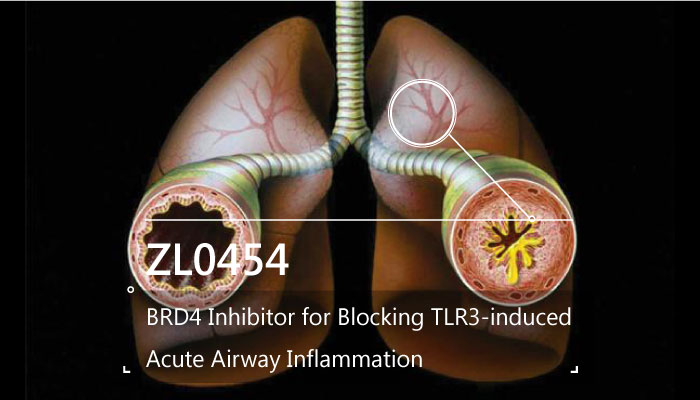As we mentioned in our previous blog “ZL0420 is a BRD4 Inhibitor for Blocking TLR3-induced Acute Airway Inflammation”. Diseases characterized by airway inflammation, excessive airway secretion, and airway obstruction affect a substantial proportion of the population.
Toll-like receptors (TLRs) is a family of innate immune receptors. The activation of TLRs is an important step in the initiation of the inflammatory response raised against numerous pathogens. In particular, TLR3 is a mammalian pattern recognition receptor that recognizes double-stranded (ds) RNA as well as the synthetic ds RNA analog poly-riboinosinic-ribocytidylic acid (poly(I:C)). As we all know, poly (I:C) is a potent and selective agonist of the TLR3 pattern recognition receptor. Moreover, poly (I:C) mediates the innate response program to RNA virus infection. Additionally, TLR3 activation by poly (I:C) modulates the local inflammatory response in the lung. This suggests a critical role of TLR3 activation in driving lung function impairment. Thus, TLR3 activation may be an important mechanism through which viral infections contribute toward exacerbation of respiratory disease.
ZhiqingLiu, et al designed a series of diverse small molecules in the study.

And among which, ZL0454 is a potent and selective bromodomain-containing protein 4 (BRD4) inhibitor with an IC50 of 49 and 32 nM for BD1 and BD2, respectively.
Additionally, ZL0454 shows the submicromolar IC50 value of 0.73-0.86 μM against the TLR3-dependent innate immune gene program.
These programs include ISG54, ISG56, IL-8, and Groβ genes in cultured human small airway epithelial cells (hSAECs). Additionally, on the basis of cellular potency and binding affinities, ZhiqingLiu, et al also further evaluated ZL0454 for its metabolic profile in rats. The authors performed in vivo efficacy evaluations in established murine model of TLR3 mediated acute airway inflammation. ZL0454 displays higher efficacy and almost completely blocks the profound accumulation of neutrophils around the small and medium sized airways.
In addition, daily administration of ZL0454 from 1 to 50 mg/kg in groups of n=5 mice over one month each has no apparent toxic effects observed on body weight, hematological measures, liver function, and renal function. In summary, ZL0454 may offer a therapeutic potential to block the airway inflammation.
Reference:
Eur J Med Chem. 2018 May 10;151:450-461.